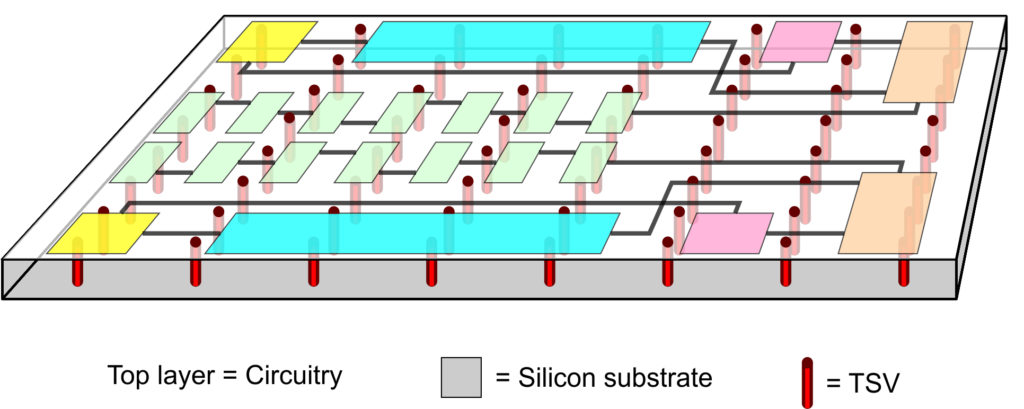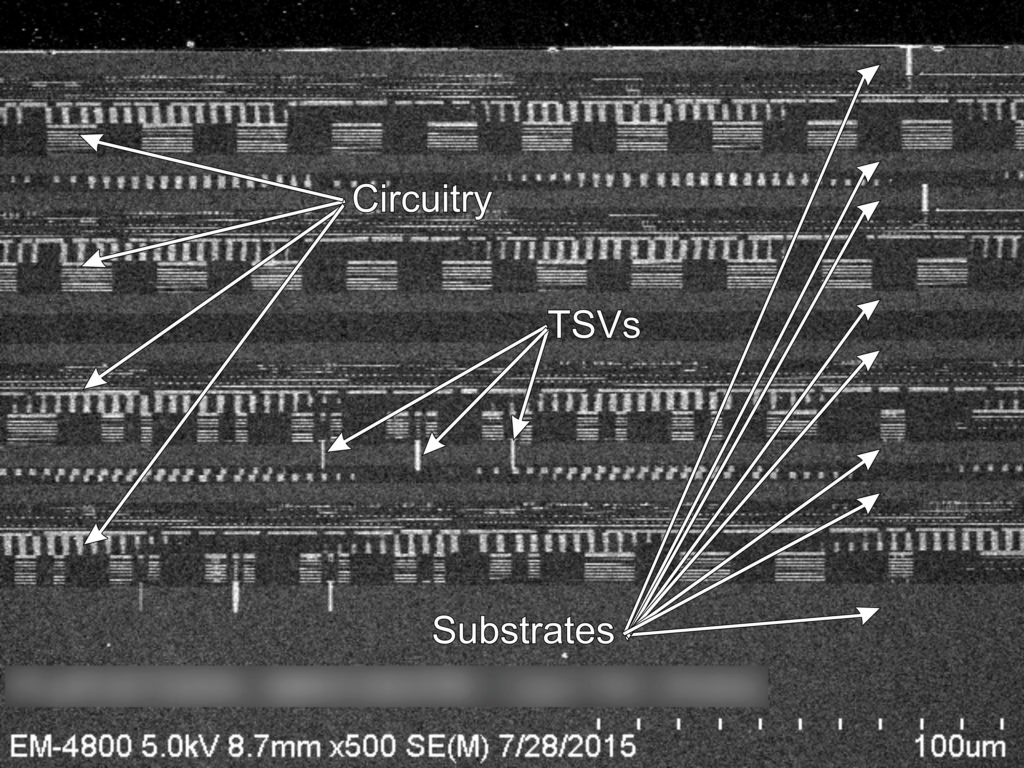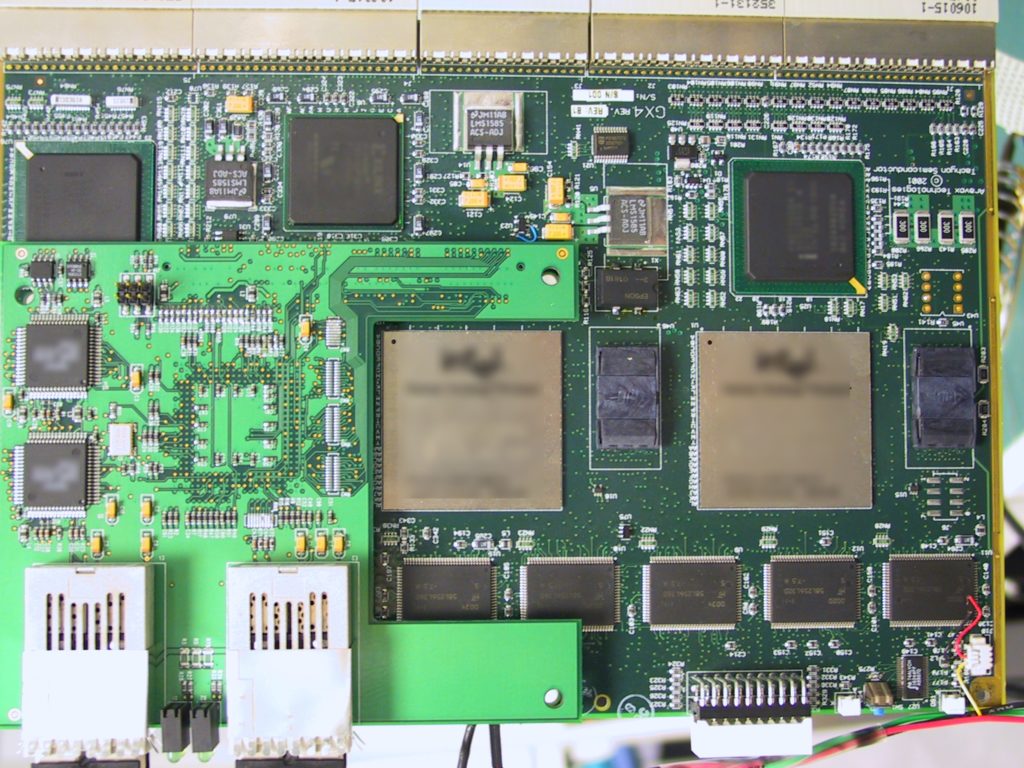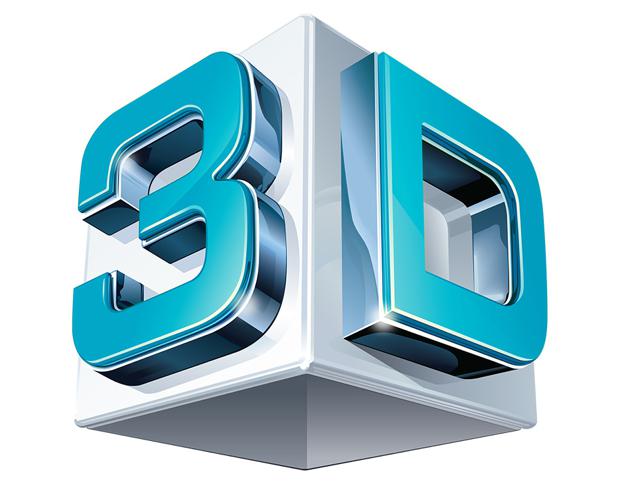NHanced does 3D enablement, 3D design, 3D consultation, manufacturing, assembly, packaging, test, etc. So, what is that all about?
What is a 3D IC?
3D ICs are integrated circuits (chips) that incorporate two or more layers of circuitry in a single package. The layers are interconnected vertically as well as horizontally. These multi-layer chips are usually created by manufacturing separate layers and then stacking and thinning them. Vertical electrical connections – TSVs – pierce the underlying silicon substrates to connect the circuitry on the different layers.
The diagram below shows a single layer (a die) with TSVs, greatly simplified and not to scale:

Stacking can be done die-on-die, die-on-wafer, wafer-on-wafer, or in combination. The thickness of the layers, the diameter of the TSVs, and the number and density of the TSVs are important factors in the performance of the finished 3D IC. Below is a greatly magnified cross-section of an 8-layer stack (courtesy of Tezzaron Semiconductor):

What are the Benefits of 3D?
In traditional 2D electronic circuits, each die is packaged separately. The packaged chips are laid out on a circuit board and connected to one another with tiny wires. A typical circuit board is shown in the photo below:

Compared to this traditional 2D architecture, 3D ICs provide several significant advantages:
Footprint
Obviously, stacking multiple dies atop one another produces a chip that takes up less space than if those dies were side by side. If the layers are aggressively thinned, a multi-layer 3D-IC is actually no thicker than a traditional 2D chip. The tiny size of 3D-ICs is extremely valuable in miniaturized devices such as cell phones and IoT applications.
Speed
Dies stacked in a 3D chip are much closer together than chips on a circuit board. The shorter distances allow electronic signals to travel more quickly from one component to another. 3D stacked devices have shown as much as 5x speed improvement over comparable 2D solutions.
Power
Shorter connections automatically require less power, but 3D ICs have another power-saving trick. When an electronic signal travels from one chip to another, it passes through special circuitry that screens out any accidental electrostatic discharge (ESD). These ESD filters consume energy. Signals that travel from one layer to another within a 3D-IC do not require ESD checks. Tests have seen as much as 90% reduction in power consumption.
Heterogeneous Integration
Because the layers in a 3D IC are manufactured separately, they can be built differently. This is more important than it might seem! The process in which a die is built affects the behavior of the components on that die: one process makes better capacitors, another makes faster transistors, etc. Even more interesting, the layers may be built at different process nodes – that is, the electronic components may differ in size. This affects the cost, complexity, and performance
of each layer. It is even possible to stack layers that are built of different materials. All of these possibilities mean that a 3D IC can combine the best of each process, node, and substrate without compromising some components to accommodate others. In fact, a multi-die stack can contain combinations that are flatly impossible to achieve on a 2D chip.
What’s the Catch?
If 3D is so wonderful, why isn’t everybody doing it?
There are a few major hurdles to overcome. First, every die in the stack must be designed for stacking, and that design effort is considerable. If different entities are responsible for the different layers, close collaboration is essential from initial design through final test. Second, the manufacturing steps must be carefully coordinated. Different layers can be processed by different manufacturers, and they are most likely stacked at yet another facility.
In specific markets such as memories and sensors, the immediate benefits of 3D far outweigh the difficulties. Successes in these initial markets are already establishing precedents for future designs. As the 3D architecture matures, the industry will see a steady increase in ambitious, ground-breaking 3D projects. 3D is clearly the technology of the future!
Today, only a select few companies have mastered 3D. They have built the necessary relationships, created the supply chain, acquired the skills and experience, and actually produced working 3D ICs.
NHanced is one of those companies. Are you ready to NHance your product? Contact us today.
